The 20 Most Influential Female Photographers of 100 Years
Categories: Celebrities | Photo School
By Pictolic https://pictolic.com/article/the-20-most-influential-female-photographers-of-100-years.htmlIn this issue, we have collected two dozen of the most talented female photographers of the last century, who with their creativity made a huge contribution to the development of the world art of photography.

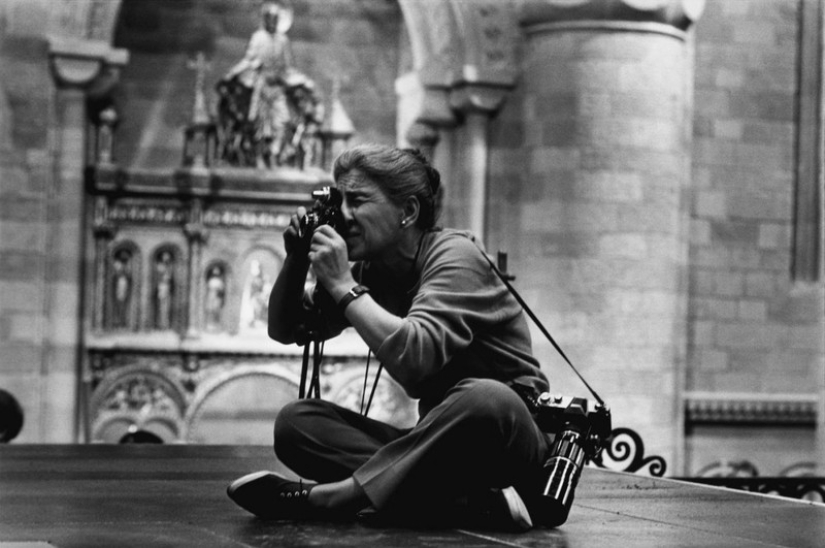
Eva became interested in this type of creativity in 1946. She took her first steps in professional photography two years later at Harper's Bazaar magazine under the guidance of its art director Alexei Brodovich. During her creative career, Eva has worked in China, South Africa, Russia and Afghanistan, photographing a variety of subjects, events and portraits. She became widely known for photographing Hollywood stars and political figures: Marlene Dietrich, Joan Crawford, Elizabeth Taylor, Clark Gable, Malcolm X, Jacqueline Kennedy, Margaret Thatcher, Queen Elizabeth II and others. She was especially famous for her series of portraits of Marilyn Monroe.
In the post-war years, Eva Arnold bore the unofficial title of the grand dame of photojournalism. She is considered one of the creators of the "golden age of news photography", associated with publications such as Life and Look. These magazines attracted attention not so much with their texts as with highly artistic photographs taken by such masters as Henri Cartier-Bresson, Gordon Parks, Robert Capa and others.
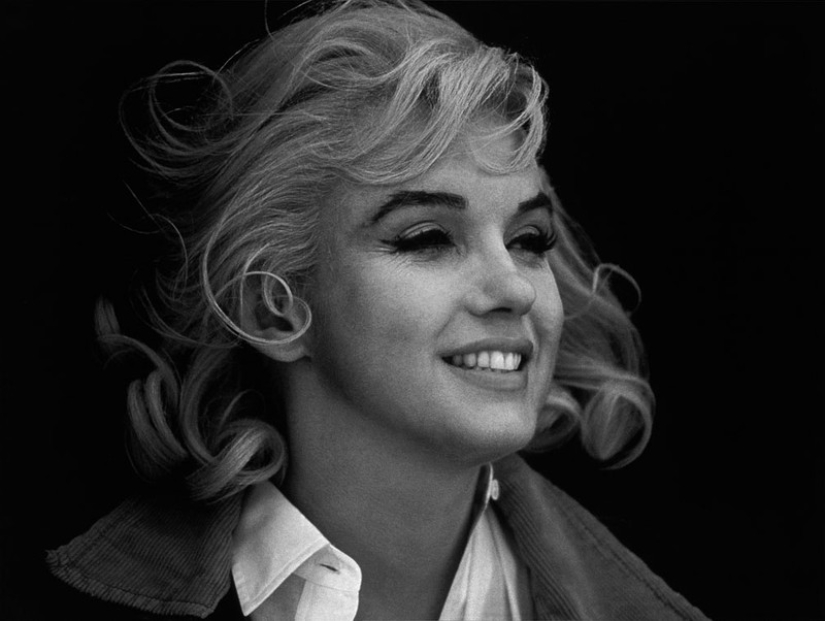
In 1980, the Brooklyn Museum in New York hosted the first solo exhibition of photographs of Eva Arnold taken in China. In 1995 she became a member of the Royal Photographic Society.
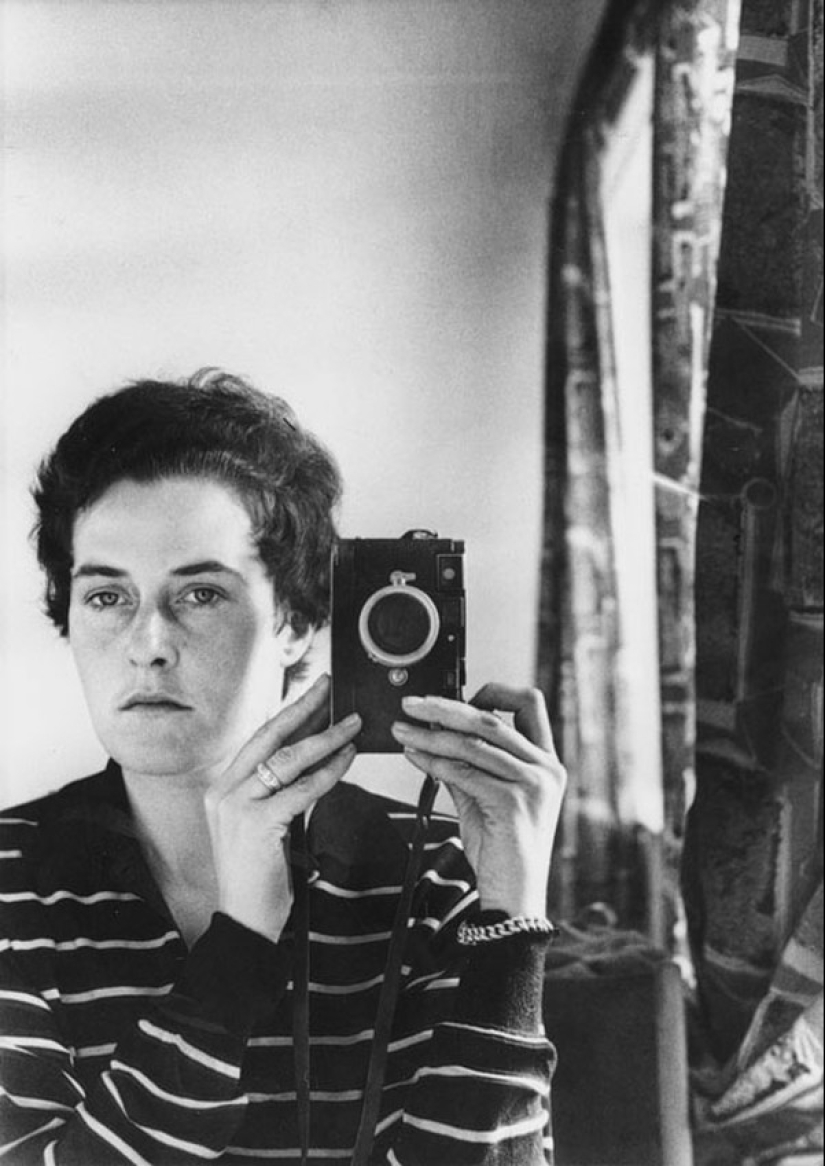
In total, Inge published about 30 monographs during her life. She worked in different genres, photographing landscapes, portraits, architecture, reports, but became famous primarily as a street photographer.
Inge became interested in the art of light painting in the early 1950s, when she worked in post-war Vienna with photographer Ernst Haas. She was inspired to develop her own creativity by watching the works of the great Henri Cartier-Bresson.
Inge traveled a lot. She visited Europe, Africa, the USA, South America and the Middle East. “Photography is a strange thing... You just trust your eye, but you can’t help but bare your soul,” she once said.
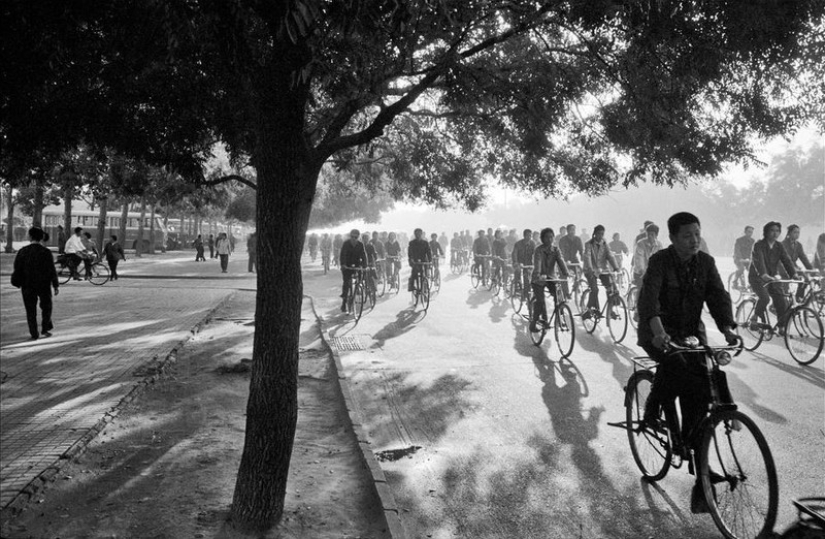
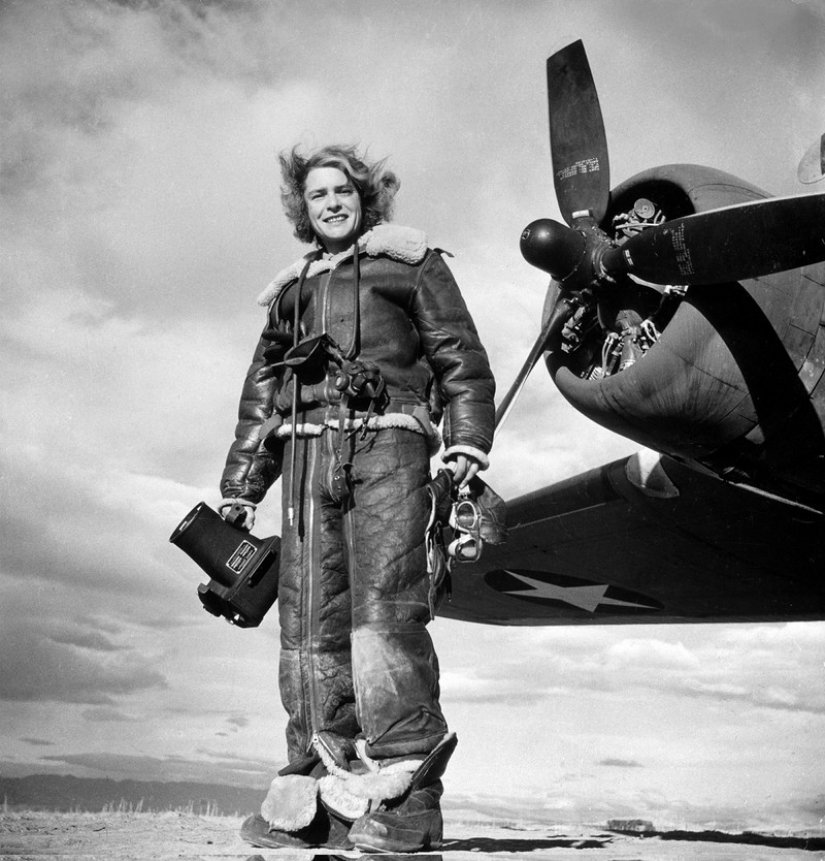
American photographer and photojournalist Margaret Bourke-White, a pioneer of reportage, became Life magazine's first female photojournalist. She was also the first Western photographer to visit in 1930. She can also be called the first woman who was allowed to work at the front. During the Second World War, Margaret photographed very actively and was the only foreign photographer present in Moscow during the attack by Nazi Germany; she later accompanied American troops.
Her book Dear Fatherland, Rest Quietly, in which Margaret showed all the horrors of war, gained worldwide fame, and her autobiography A Portrait of Her Own became a bestseller.
As contemporaries noted, Margaret always revealed the objective essence of an event and filmed in such a way that each frame reflected her attitude to what was happening. A master of dynamic journalistic photo essays, she was incredibly insightful and knew how to convey vivid emotions in her photographs. As Margaret herself said, the camera was her salvation, a barrier between her and reality. Today her photographs are kept in US historical museums and the Library of Congress in Washington.
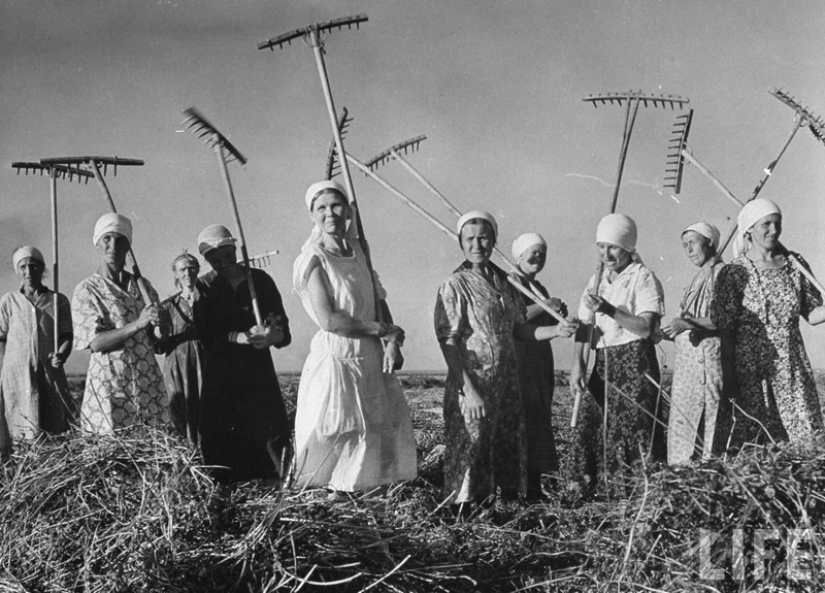
Margaret Bourke-White died at the age of 67 after suffering from Parkinson's disease for a long time.
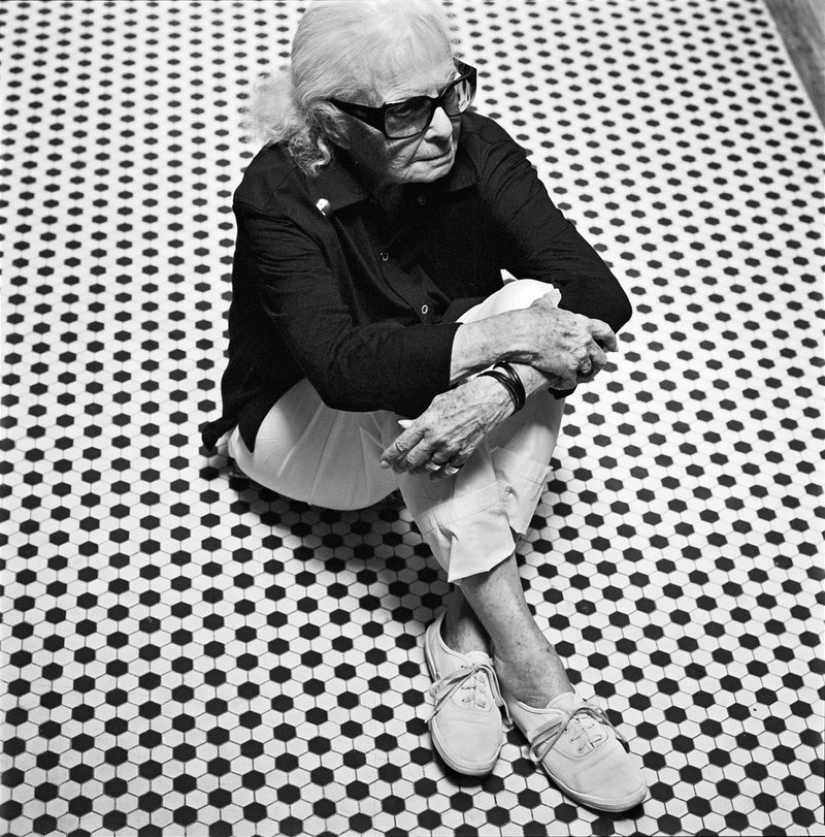
In the 1950s and 60s, Lillian worked at Harper's Bazaar as a fashion photographer and art director, but soon decided to radically change her style and became interested in high-contrast black and white photography. She began using this technique in fashion shoots, thanks to which she gained considerable popularity.
Lillian was very interested in pictorial photography. Perhaps this is what explains the picturesque and graphic nature of her works. She was known as an experimenter who took the time to process frames and tried to shoot out of focus and at long shutter speeds.
Lilian Bassman is often described as a self-taught photographer who, as she herself said, tried to “get rid of the heaviness in photography.”
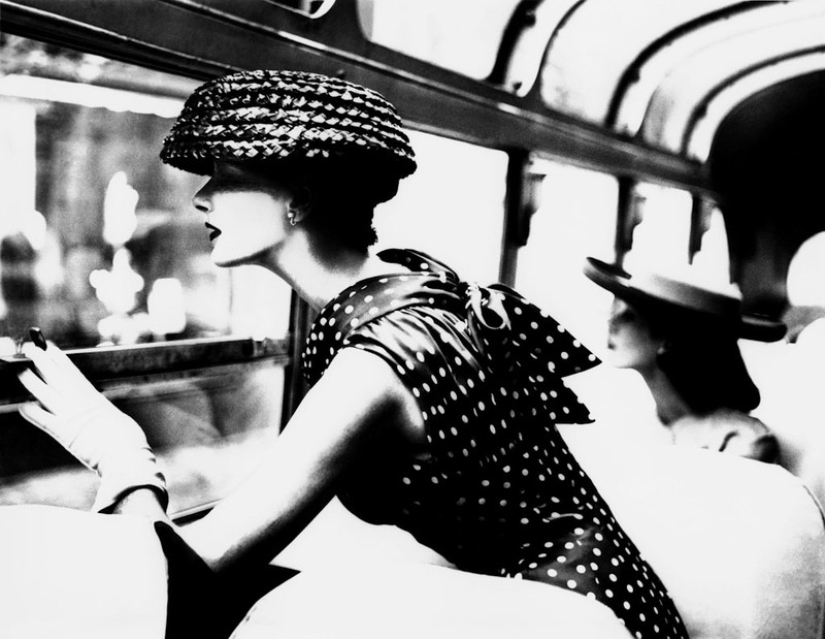
At the end of her career, Bassman discovered color abstract photography and mastered Photoshop.
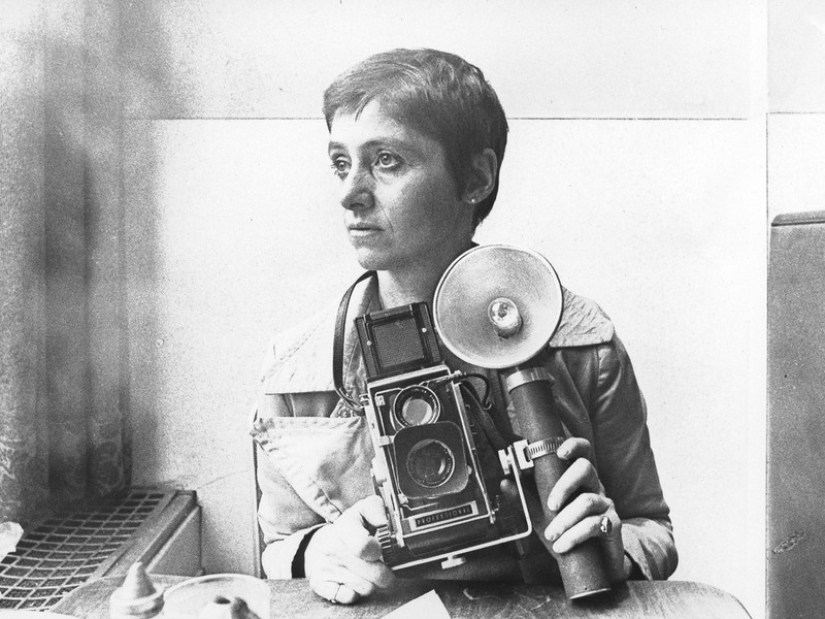
Diane Arbus is an American photographer known for her black-and-white square photographs of “deviants and misfits (dwarfs, giants, transsexuals, nudists, circus performers), as well as ordinary people who look ugly and surreal.” The catalog of her work, published by Aperture magazine, is still one of the best-selling in the history of photography.
Diana began her creative journey in photography together with her husband Alan. In 1941, they attended a photographic exhibition at the Alfred Stieglitz Gallery, where Diana first heard names such as Matthew Brady, Timothy O'Sullivan, Paul Strand, Bill Brandt and Eugene Atget. Alan already had some experience in this field, having completed an army photography course during World War II. The couple decided to try their own hand at photography. Their first collaboration was an advertising shoot for Diana's father's department store.
In 1946, Diane and Alan opened their own photography studio, Diane & Allan Arbus, where she became art director and he became photographer. Very soon they began to receive orders from Glamor, Seventeen, Vogue, Harper's Bazaar magazines, but this was not what interested the young creators. In their own words, they “hated the fashion world.”

Soon Diana began working alone and very quickly found her topic. She showed the world those people when meeting whom most of us look away. Dwarfs, giants, nudists - the gallery of images shown by her is impressive... Being a very sensitive and receptive person, Diana suffered from depression throughout her life, and in 1971 she committed suicide.
In 2004, her photograph Identical Twins sold for almost half a million dollars.
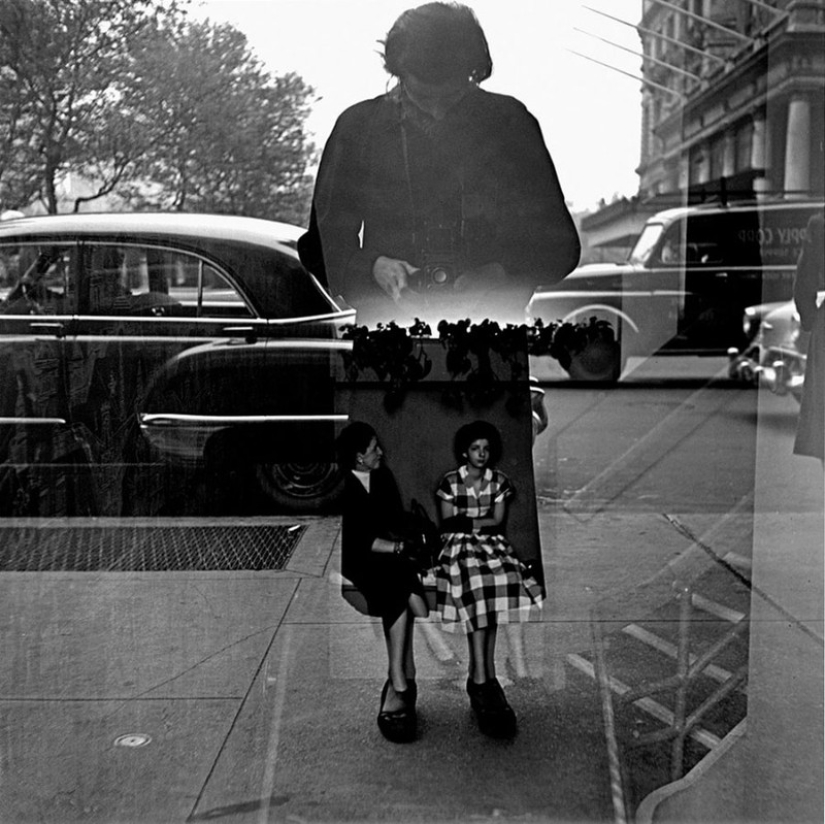
She took her first photographs in France at the turn of the 1940s and 50s. In the USA, Vivian began photographing cityscapes and soon bought a Rolleiflex camera. During her life, she did not care about publishing her photographs, most likely regarding them as a hobby.
Vivian Maier's work depicts New York from the 1950s to the 1980s. Thanks to her works, viewers can see the streets of this city of those times. Mayer has a lot of images and photographs. She almost never printed her work, and at the end of her creative career she did not even develop the films, but simply folded them.
Vivian Maier worked as a nanny, and almost no one knew about her passion for photography. According to the testimony of contemporaries who knew her, she was a very modest, secretive and yet eccentric person. So, being very tall, she wore long clothes and large men's shoes, which made her figure even larger and unusual.
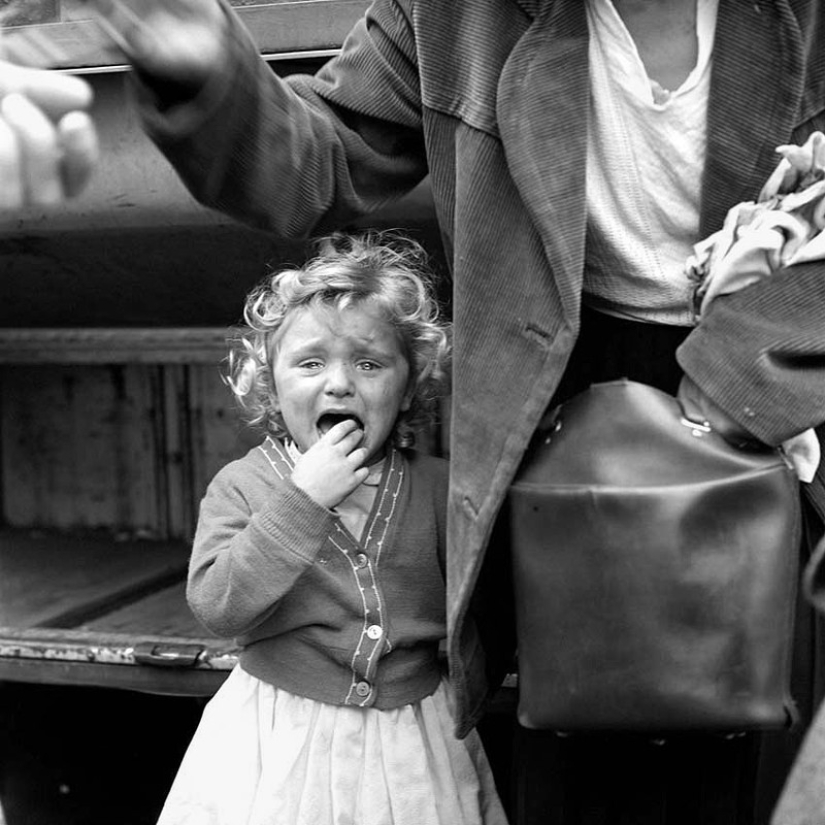
In addition to photography, Mayer was interested in cinema and even shot several plotless videos about the life of the city. She also recorded interviews with the people she spoke with. All these works are still in the research stage.
The world owes the unexpected discovery of the name of this photographer to John Malouf, who bought her photographs at auction for $400, not even knowing the value of his acquisition. He counted more than 100,000 negatives, which he is still sorting through and later plans to publish. Since there were a lot of photographs and their storage was difficult, John had to sell some of the photographs to collector Jeff Goldstein.
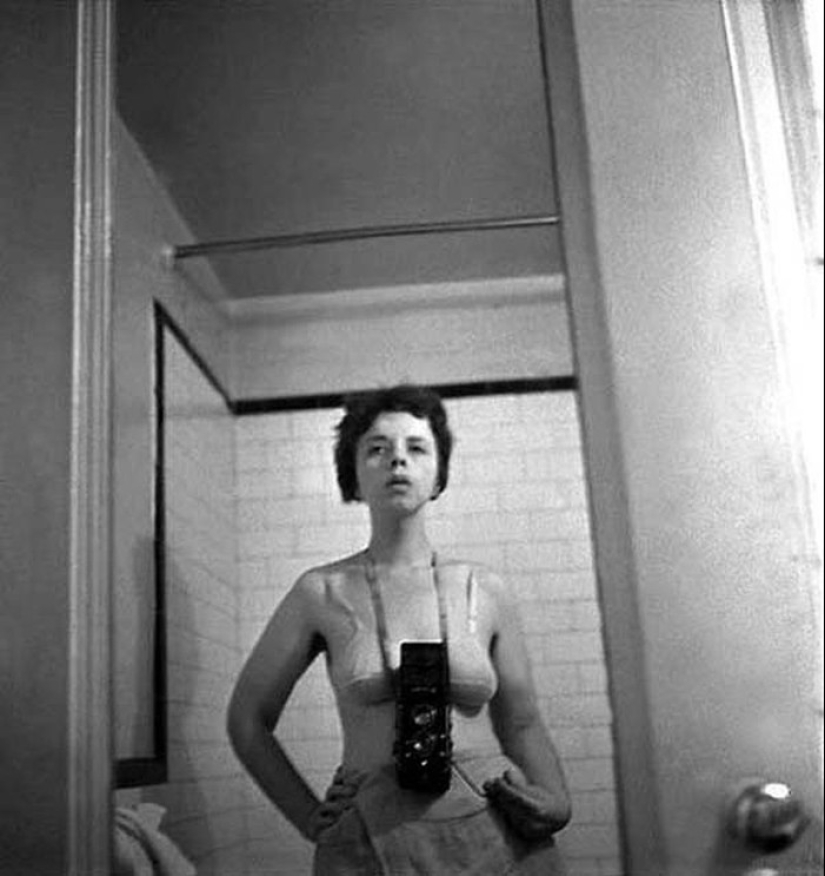
Lisette was born into a good Viennese family and studied music with the famous composer Schoenberg. After her father's death, her family moved to Paris, where she made a living by singing. But very soon the girl got bored with music, and she took up photography.
Lisette studied with Andre Kertesz's first wife, Roja Andre, and it was from her that she learned the main rule: “Never film something that you are not passionately interested in.”
The model is considered one of the founders of street photography, her gaze is always cruel.
She told her students: “Take pictures from your guts!” By the way, the most famous of them, Diane Arbus and Bruce Weber, just managed to find their own style, “shooting with the insides” and showing the world what no one wants to see.
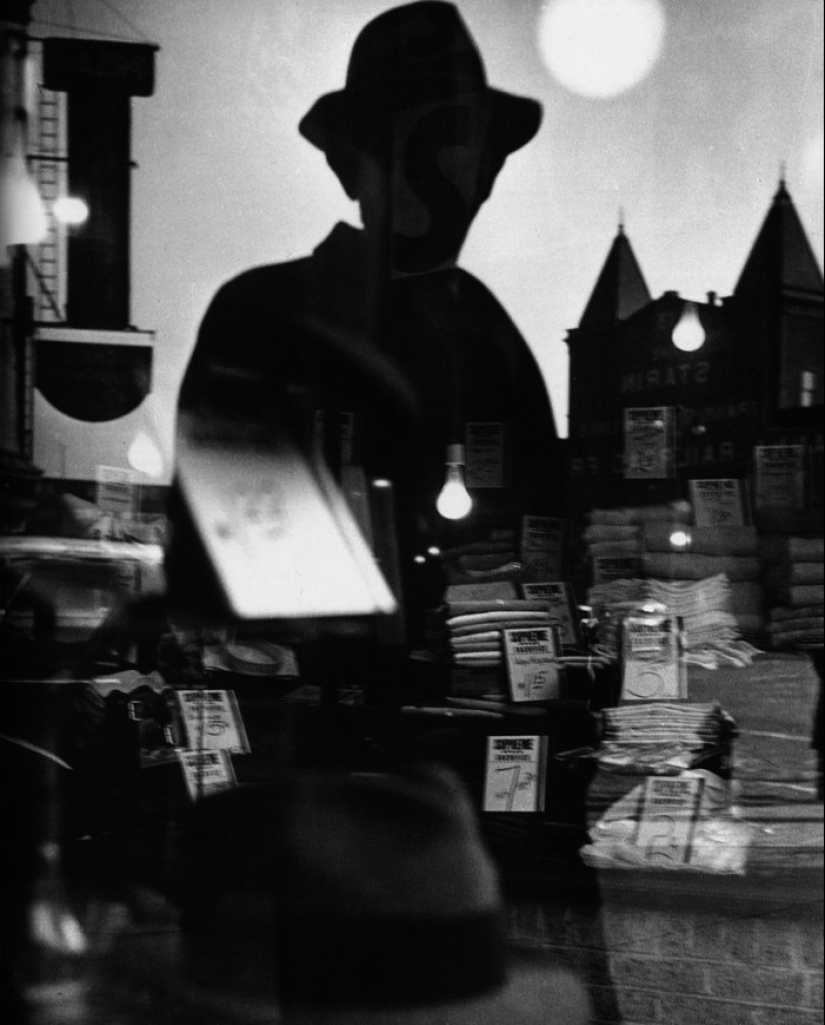
The urban environment was Lisette's main source of inspiration. In her portfolio we see reflections in the windows of skyscrapers, crowds of passers-by, portraits of beggars, and the fading beauty of wealthy ladies. Until 1950, Model's work was published in the glossy magazines Look and Harper's Bazaar, and in the post-war years this style was considered too harsh and went out of fashion.
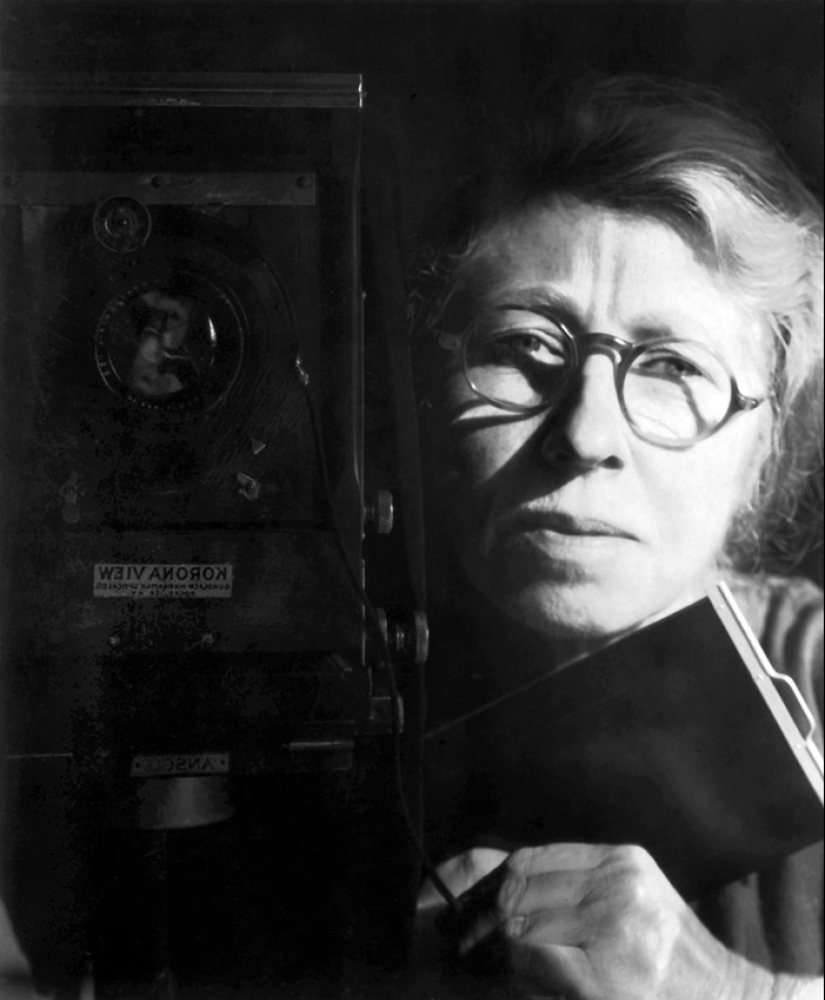
Imogen Cunningham is an American photographer, known for photographs of plants, nudes and industry, one of the founders of the informal association of Californian photographers “Group F64”, which included Ansel Adams, Edward Weston, Willard Van Dyke and others.
Imogen Cunningham became one of the first women who dared to call photography her profession. Her career began in 1901 in the studio of Edward Curtis in Seattle, where she printed photographs. In 1909, Imogen went to Germany to study at the Technical High School, and after returning she opened her own portrait gallery in Seattle, which quickly gained fame.
In 1906, Imogen truly shocked the local public by publishing her self-portrait in nude style. Since then, nude photography has become her favorite genre, although not the only one. Many of Imogen's photographs were scandalous.
In the early 1930s, Cunningham joined the F64 Group, whose members promoted photography as a separate art form and focused specifically on photographic aesthetics. After some time, she opened a new gallery and began teaching at the San Francisco Art Institute. In 1974, Imogen Cunningham published a retrospective monograph of her photographs. She died in 1976 without completing her last series, Life After 90.
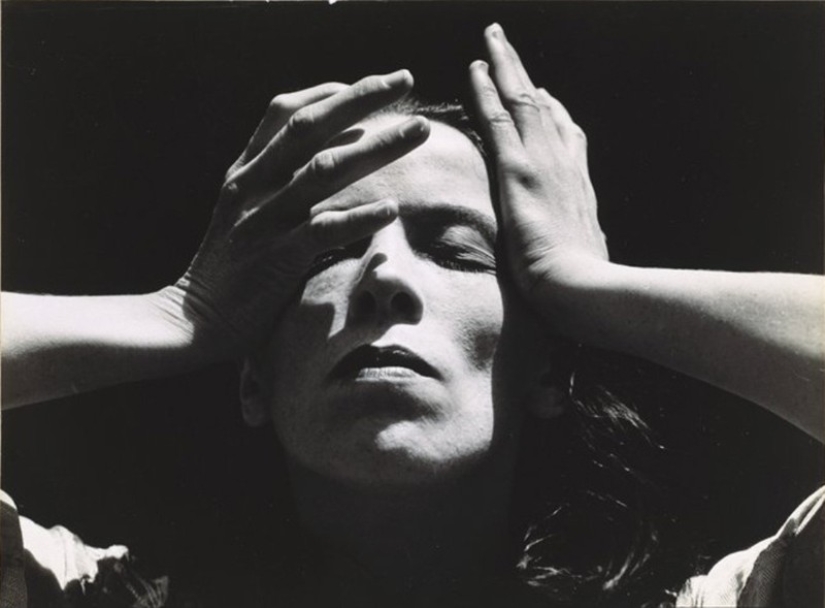
Francesca Woodman is an American photographer, the daughter of painter and photographer George Woodman and ceramic artist Betty Woodman.
Francesca started taking photographs at the age of 13. She graduated from design school and often visited the Roman avant-garde bookstore-gallery Maldoror, where the first exhibition of her work took place. In 1981, a series of her photographs, “Several Samples of Disturbed Internal Geometry,” was published in Philadelphia, which remained the only publication during her lifetime.
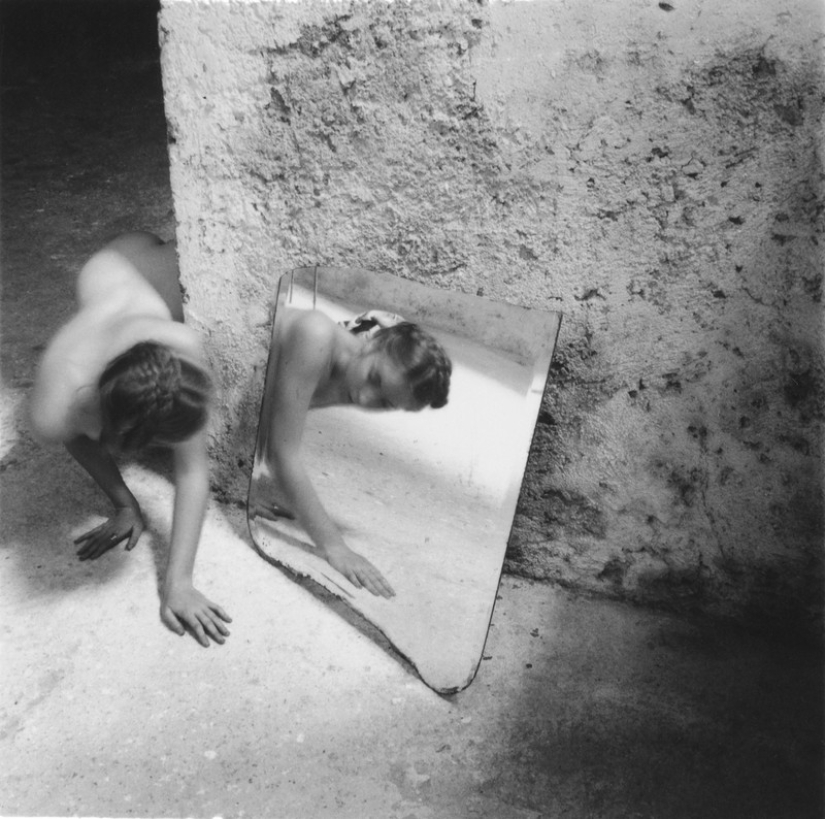
Francesca's work is often called phantasmagorical and even crazy. Very often she herself is present in her photographs. A mystical house with a fireplace, windows and mirrors represents an unfamiliar, frightening world. In a sense, each of her photographs is an attempt to look at her own life as if from the outside and, observing, to capture the elusive. According to researchers, Woodman’s work was especially noticeably influenced by the painting and photography of surrealism, self-portraits of Remedios Varo, Frida Kahlo, the works of Hans Bellmer and American masters - Clarence John Laughlin and R. Yu. Meatyard.
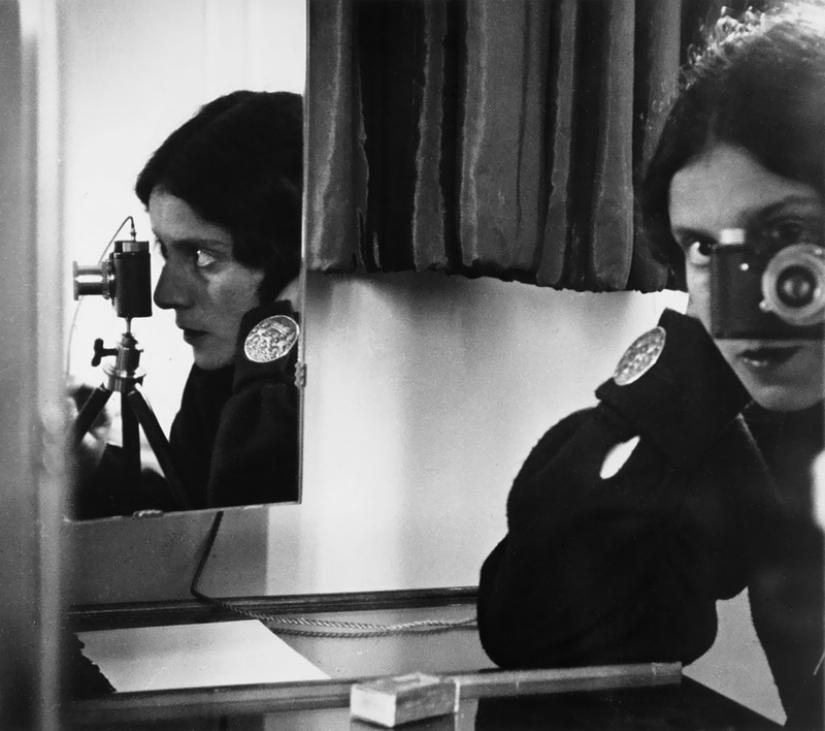
In the early 1920s, Ilse Bing collected materials for her dissertation on the history of German architecture. She needed a camera, and soon she purchased a Leica - at that time a completely new camera that few people had used yet.
Appreciating the compactness of the camera, Ilsa began to shoot a lot. Soon the level of her skill grew so much that Bing's works began to be published in German periodicals. In 1930, despite her family's resistance, she decided to become a professional photographer and moved to Paris.
In the late 1920s and early 1930s, Ilse Bing was almost the only professional photographer to use a narrow format camera, and so skillfully at that. It is for this reason that they began to call her the “Queen of Leica.” Ilse's works were equally well received by the general public and representatives of avant-garde European art. Her photographs have participated in European exhibitions along with photographs of Man Ray, André Kertész, László Moholy-Nagy and Henri Cartier-Bresson.
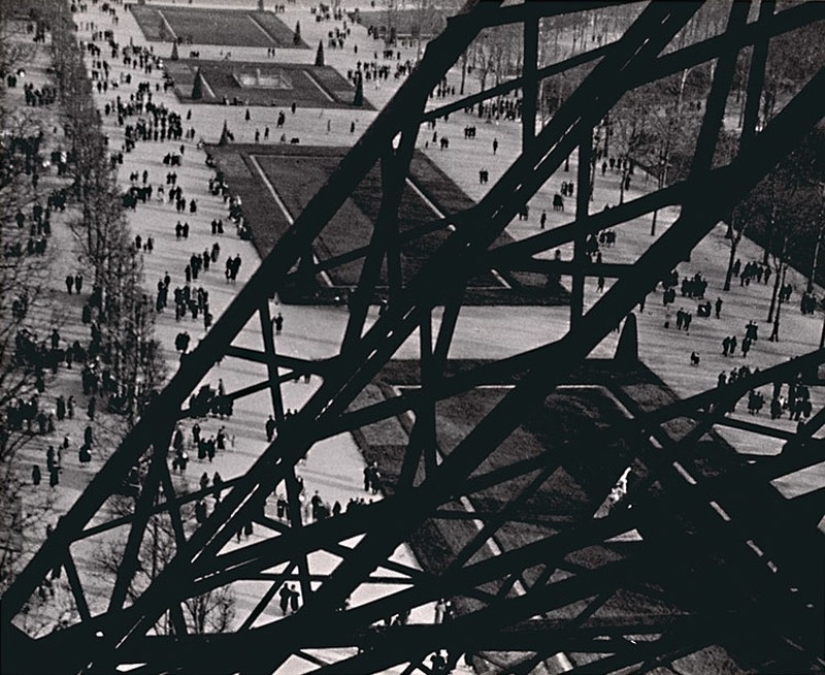
With the outbreak of World War II, Ilse Bing emigrated to the United States, replaced her Leica with a large-format camera, and soon gained fame as a talented portrait photographer.
An outstanding Russian “light painting artist”, the first official photographer of the St. Petersburg Conservatory, founder of her own artistic and photographic workshop.
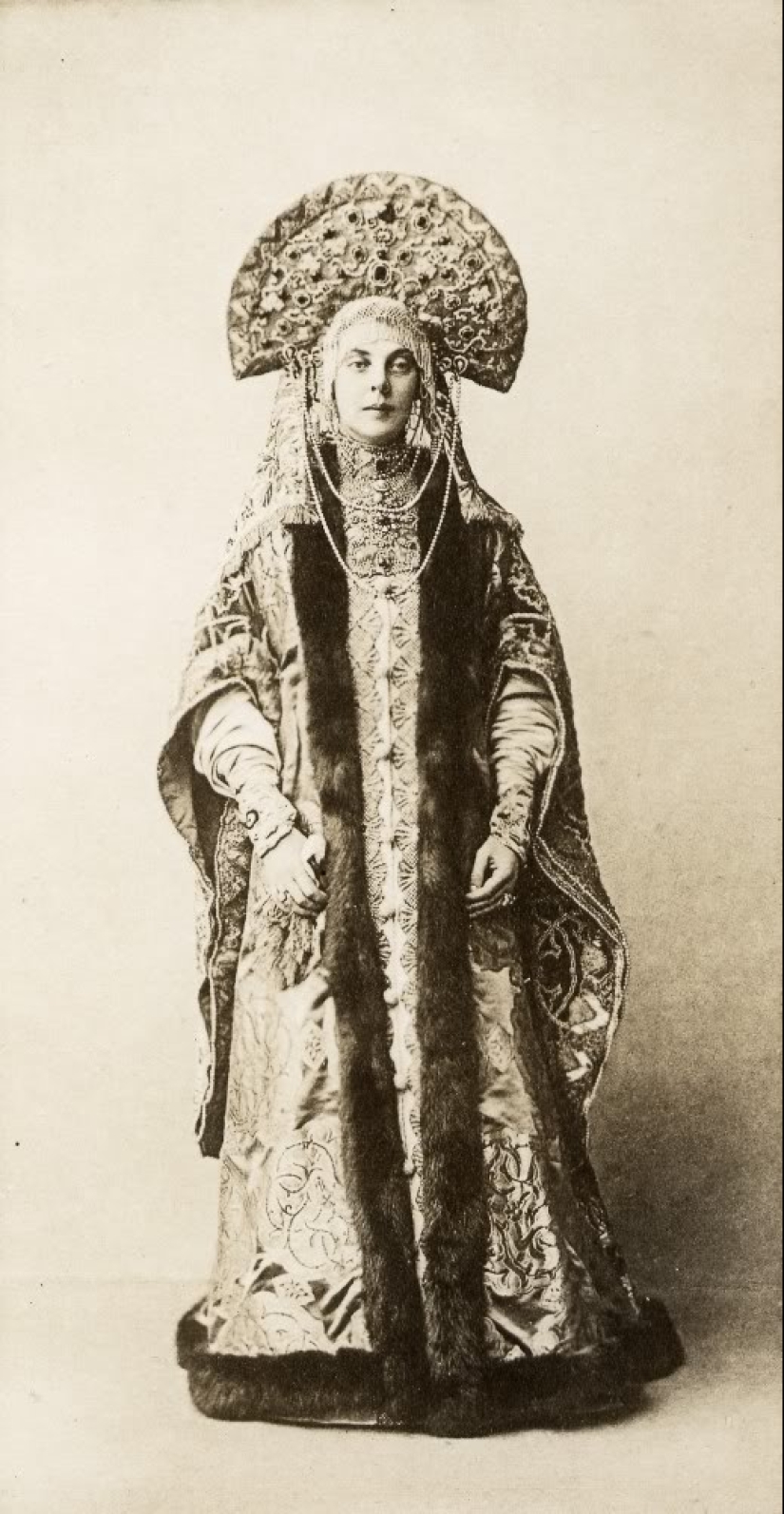
Elena began her career working as a teacher and saleswoman. But, always being partial to photography, in 1892 she decided to complete the courses of the V Department of Light Painting at the Russian Technical Society, and immediately after them she received specialized education in Paris from the famous master of photography Felix Nadar. Mrozovskaya is the author of a large number of portraits of famous artists, painters and writers. She was a photographer at the famous costume ball of 1903 in the Winter Palace, and photographed performances at the V. F. Komissarzhevskaya Theater. She was also very good at taking portraits of children.
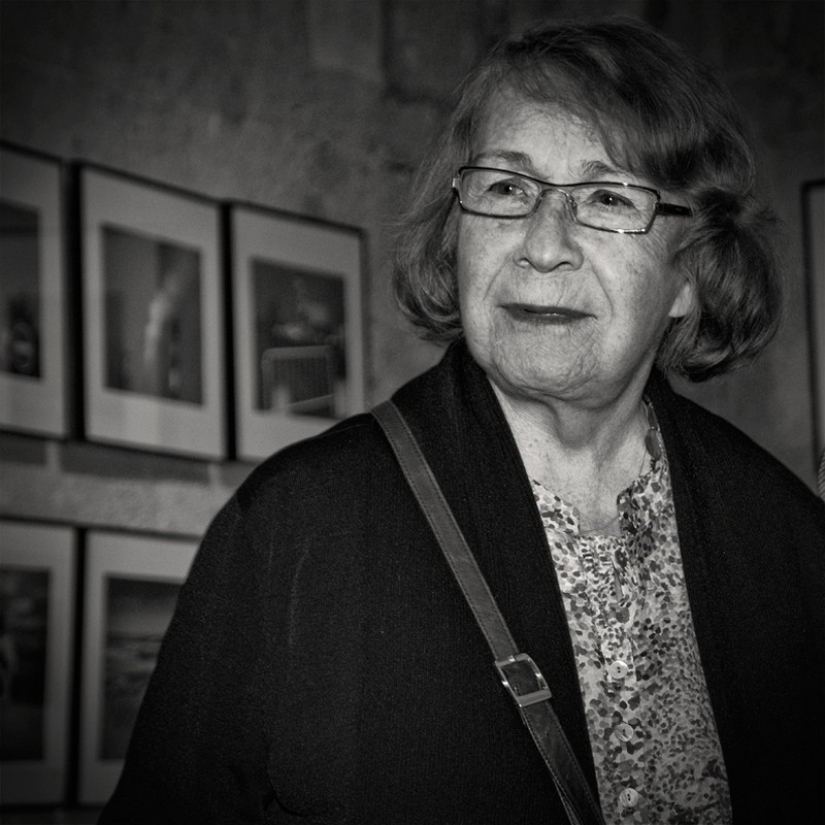
Sabina Weiss herself did not remember where, back in 1936, an ordinary twelve-year-old girl from a tiny Swiss town had a completely irrepressible desire to photograph everything around her. She just always liked to observe the world around her, and she was not going to hide her feeling of admiration for it. Paris through the eyes of Sabine Weiss is a truly magical city. After the war, it seemed to be saturated with energy, every corner became interesting, and every event became significant. And Sabina tirelessly traveled around Paris, filming everything she saw around.
One day she will say that a huge part of her photographs belong to the environment that gave birth to them. But this will happen only later, when her landscape photographs, taken for herself, without an eye on the future, will become a sensation at many exhibitions, and Sabina herself will become a recognized master. Meanwhile, she already had something to do: since 1952, she collaborated with Vogue magazine and worked at the famous Rapho photo agency under the leadership of Robert Doisneau himself (perhaps the author of “The Kiss” was also influenced by Sabina’s sincere love for Paris). She shot a lot for advertising, as well as for leading European and American publications: Time, Life, Newsweek, Town and Country, Holiday, Paris Match.
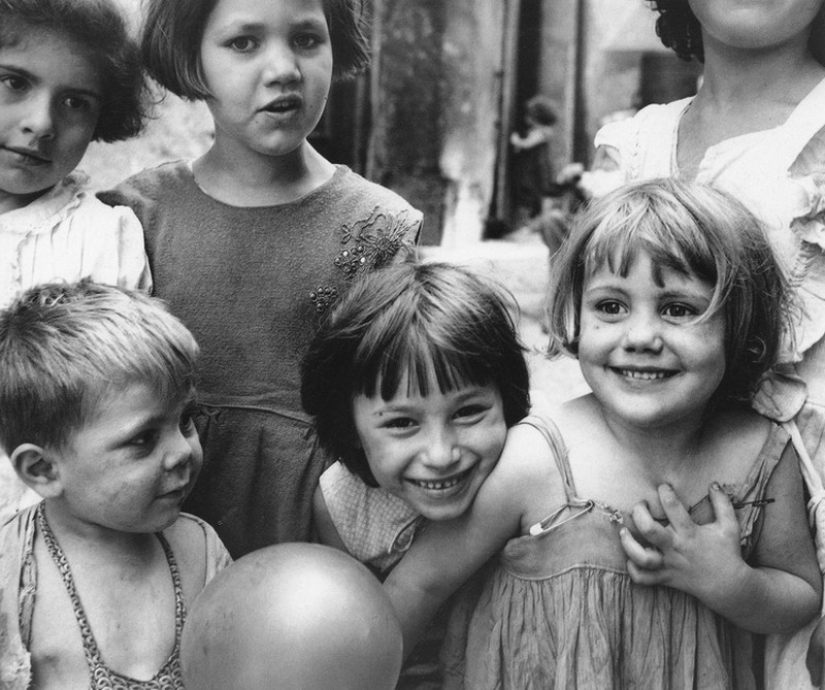
Sabina Weiss is already an undisputed authority in the world of photography, whose exhibitions are always sold out, and many of the photographs she took are stored in museums around the world - in New York, Paris, London, Zurich, Chicago, Kyoto... History serves as a clear illustration of her talent with one of the most famous photographic exhibitions in history. We are talking about the Family of Man biennale that took place in 1955, for which a variety of photographers from all over the world submitted over 2 million images. However, the final version of the exhibition included only 503 works, and the author of three of them was Sabine Weiss.
She herself admitted that she was always most interested in the naturalness of the situation and the true feelings of people. And therefore, in general, she did not hide her cool attitude towards modern photography, which, in her opinion, was too keen on constructing the frame and the objects in it.
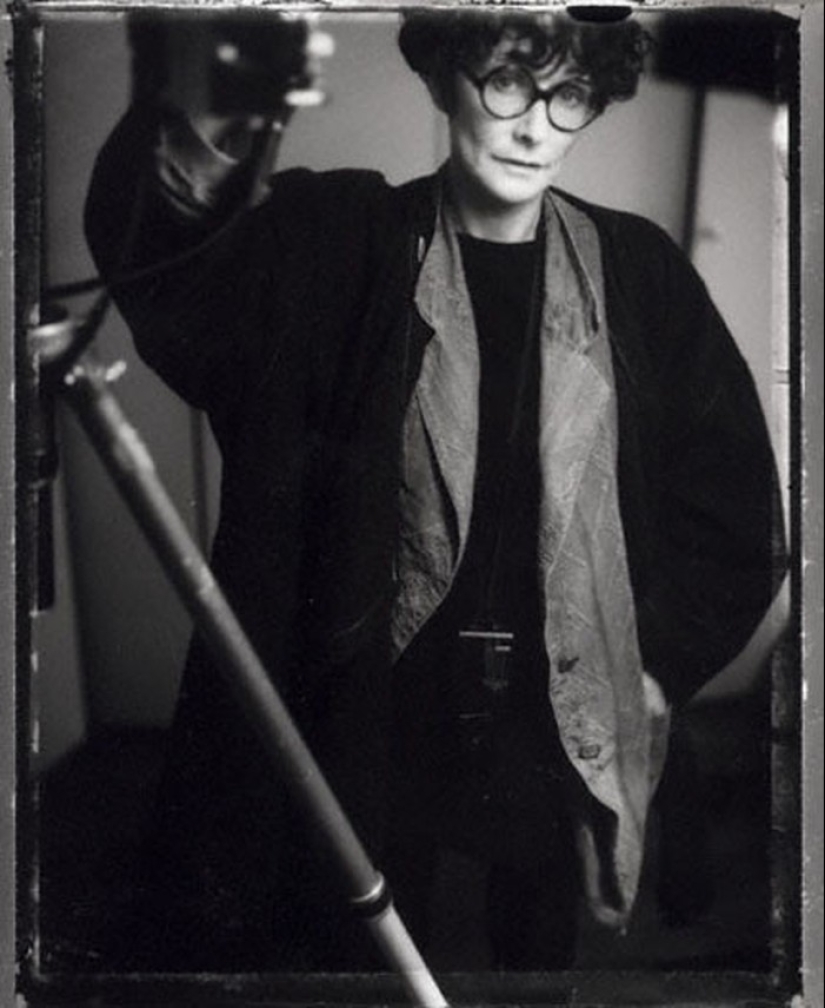
The real name of the Frenchwoman Sarah Moon is Marielle Hadan. Being a successful model, she was actively looking for herself in another field. Usually, after leaving the modeling business, girls become not very successful actresses, but Sarah Moon was an exception - she became a sought-after photographer.
At first, she photographed her fellow fashion models almost as a joke, but soon became interested in it and began to spend more and more time behind the camera, mastering the difficult skill of a photographer. In 1967, Sarah retired from modeling, concentrating entirely on fashion photography. In the 1970s, she became the first woman invited to shoot the Pirelli calendar, a project at the intersection of advertising photography and art.
Around the same time, since 1979, Sarah tried herself as a cameraman and director, first in commercials, and then in documentaries and even feature films. In photography, she gradually moved away from the world of gloss to artistic photographs. Her style was very unconventional for those times and still makes an impression today. Studying art was not in vain for Sarah, and she transferred into her photographs, as far as possible, the style of French impressionism of the early 20th century, which became her signature style.
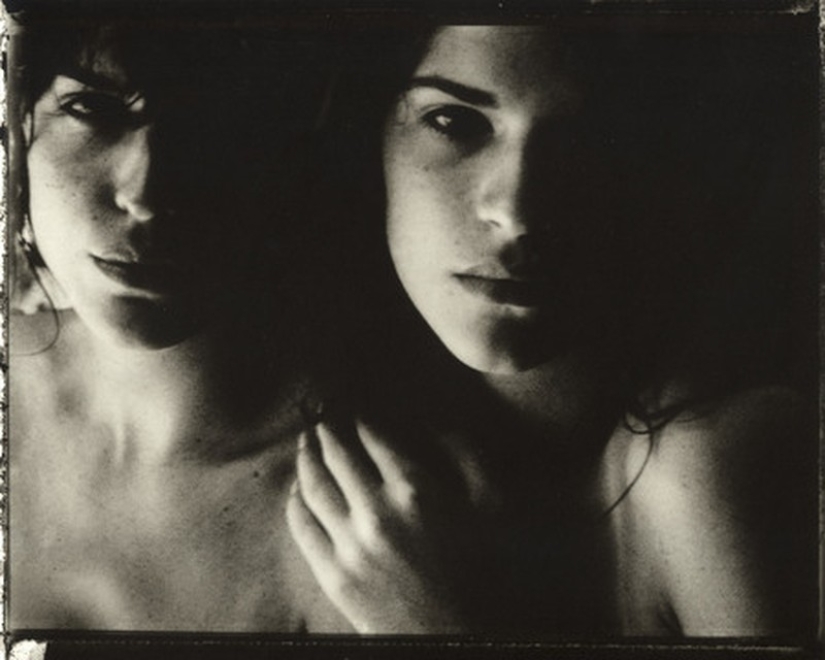
Sarah herself jokes that the reason for the blurry pictures is her myopia: she allegedly simply could not bring the lens into focus. Sarah Moon shoots almost exclusively black and white photographs, considering color to be completely unnecessary to convey the idea of the photograph. She has a large number of exhibitions to her name and has received numerous awards for her work, for example, the Clio Award as the most creative French photographer.
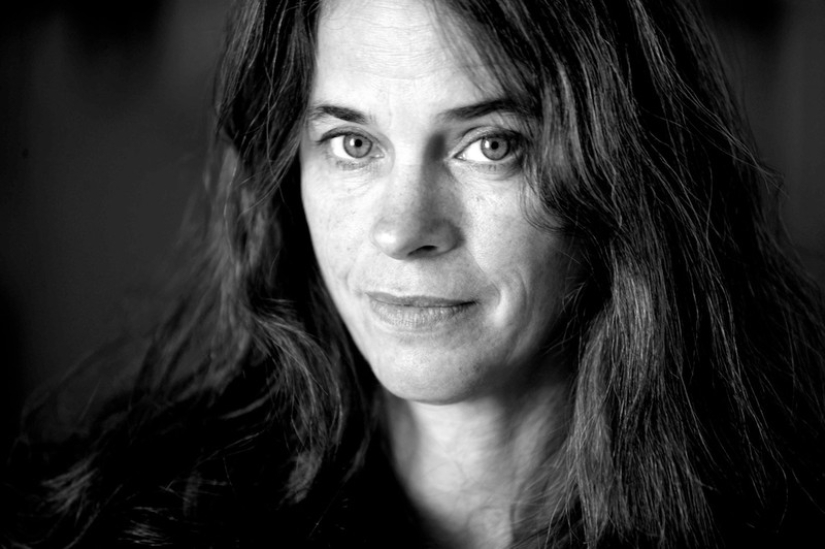
The now famous American photographer Sally Mann, in her youth she received a bachelor's degree in literature from Hollins College, but still decided to connect her life with photography. Her creative career began with a nude photo of a classmate. This is probably where Sally’s scandalous fame originates.
At the beginning of her work, Sally studied in a small room measuring 5 × 7 meters, which her father provided her with. There she conducted her experiments using old photographic equipment.
Popularity came to her after the publication of a series of photographs “Immediate Relatives”, which consisted of 65 frames, which mostly depicted members of Sally’s family on vacation. Very often she created something that was not always understood in society. For example, Sally did not at all consider her photographs of her own naked children, which were criticized by many, to be something unnatural. She took on different genres of photography, including landscapes, which also sometimes aroused polar opinions.
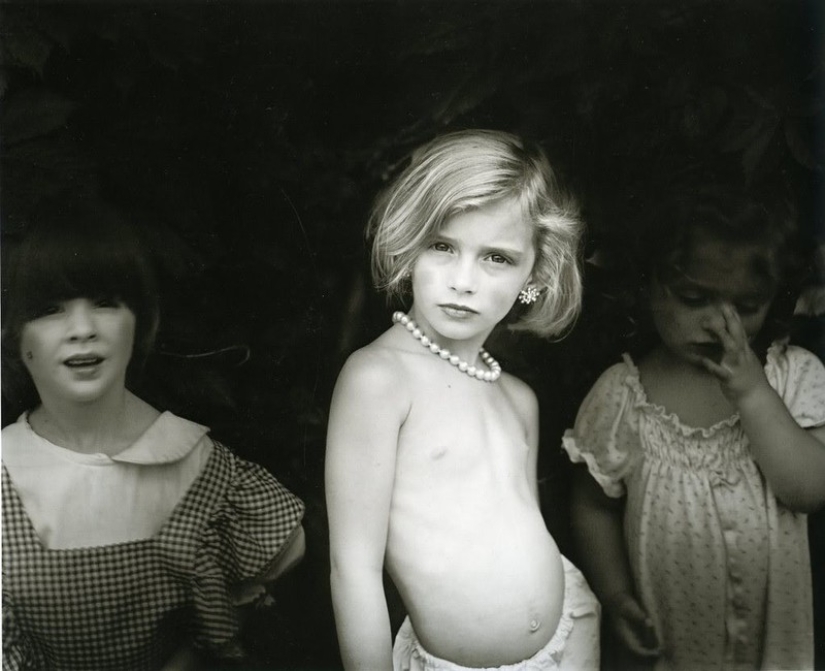
In 2001, Sally Mann was awarded the title of America's Best Photographer. It seems that this woman cannot be stopped: in 2006, she was injured while horse riding, but even while undergoing treatment, she made several interesting self-portraits.
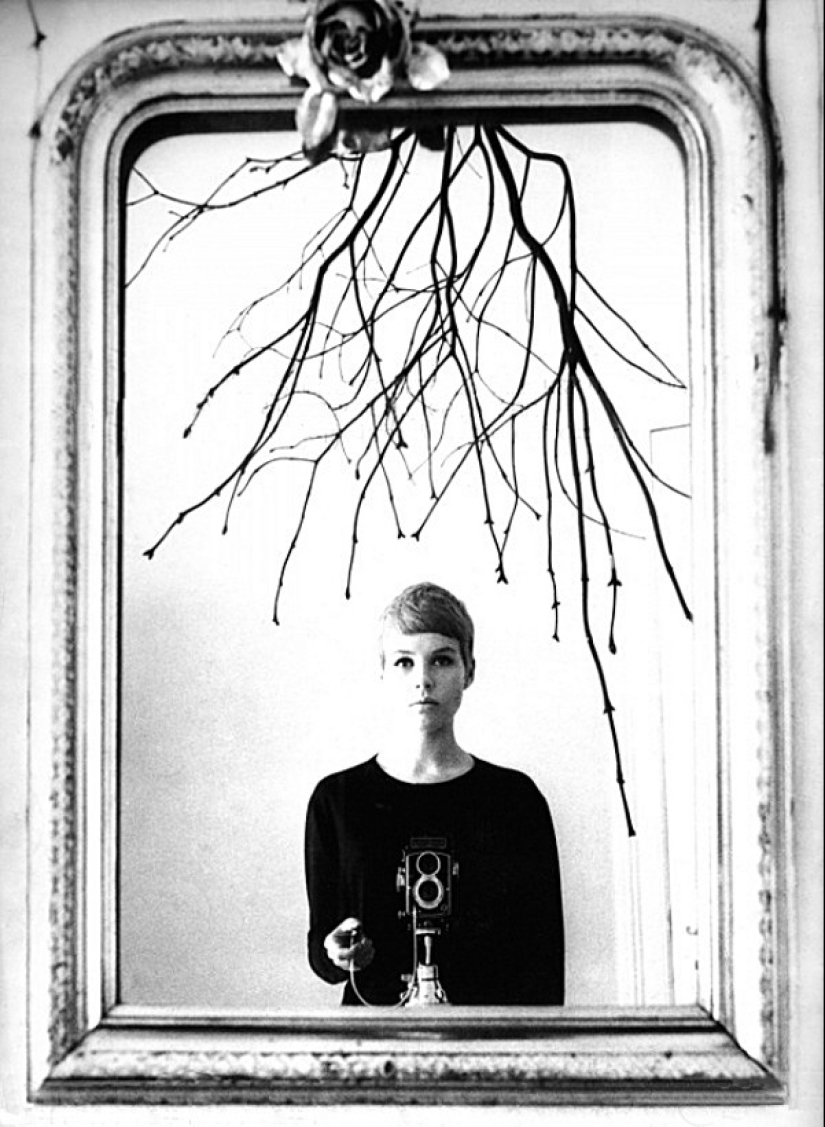
Astrid became interested in black and white photography immediately after graduating from school, although she planned to become a fashion designer. After several years of study, she worked for four years as an assistant to her photography teacher, Reynard Wolf.
Astrid was “introduced” to the legendary Beatles by her friend Jürgen Vollmer, who himself once went to a concert of the young group completely by accident. As the girl’s friends recalled, her mere appearance at the club always attracted all attention to her. One day she asked the musicians if they would like her to do their photo shoot. They, of course, agreed, because at that time they did not have professional photographs. The very next morning, Kirchherr photographed The Beatles with a Rolleicord camera.
Throughout her life, Astrid maintained friendly relations with this group. She is considered the inventor of The Beatles' unusual hairstyles, although she herself denies this fact.
In 1964, Kirchherr became a freelancer. With her colleague Max Scheler, she photographed The Beatles during the filming of A Hard Day's Night for the German magazine Stern.
Kirchherr later described how difficult it was to become a woman photographer in the 1960s:
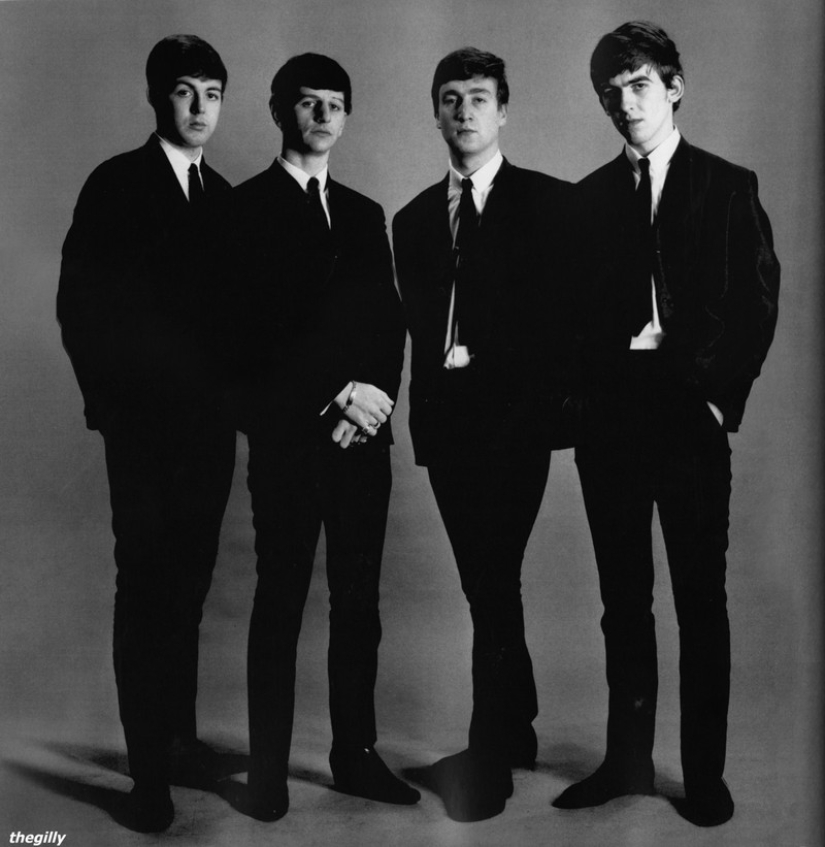
It is known that Kirchherr decided to make a collection of photographs “When We Was Fab” (2007) as her last publication:
A teacher of Russian language and literature at school, one day she picked up a camera to, together with her husband Dmitry Vozdvizhensky, show the world a whole gallery of beautiful images of Soviet reality. For the first time, Nina Sviridova’s professionally executed works were published in 1961 in the Teacher’s Newspaper.
The editors of the Sputnik newspaper immediately noticed this wonderful “transformation of an amateur into a professional, a teacher of the Russian language into a professor of photography.” In the same year, her photograph “At the Kremlin Wall” appeared in “Soviet Photo”.
Nina Sviridova and Dmitry Vozdvizhensky were rightfully included in the honorary list of that era along with V. Gende-Rothe, N. Rakhmanov, V. Akhlomov, G. Kolosov, L. Sherstennikov, E. Kassin, V. Reznikov and many other masters, whose works decorated newspaper and magazine pages and exhibition halls of domestic and foreign photographic exhibitions during the thaw period.
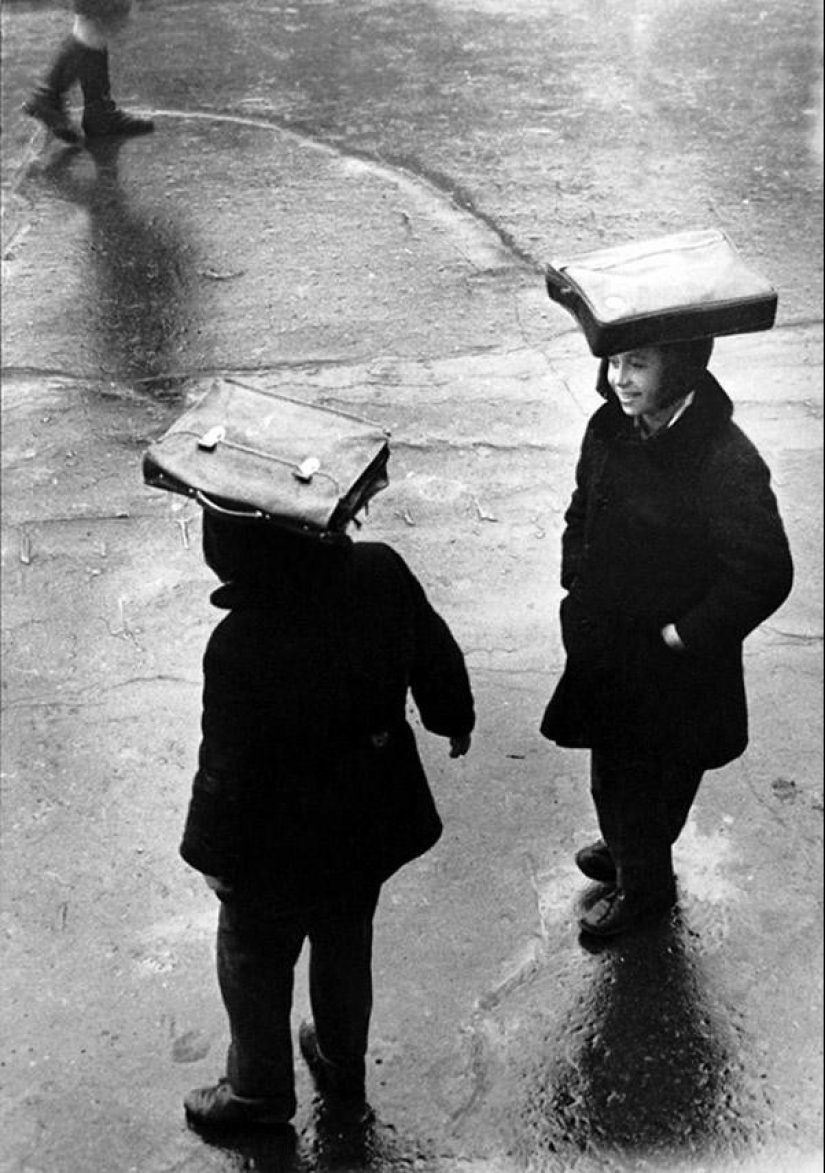
Nina Sviridova traveled a lot, she visited all corners of the Soviet Union: Transcarpathia, the Urals, Belarus, and the Baltic states.
The creative union of the spouses lasted about 40 years. Nina Sviridova defined her attitude towards photography this way: “It seems to me that every photojournalist, in addition to working on an editorial assignment, must necessarily work on his own topic, especially close to him. For me it was human happiness. I love the manifestation of optimism in people, a joyful, bright perception of the world around them.”
Nina Sviridova and Dmitry Vozdvizhensky did not change this postulate all their lives.
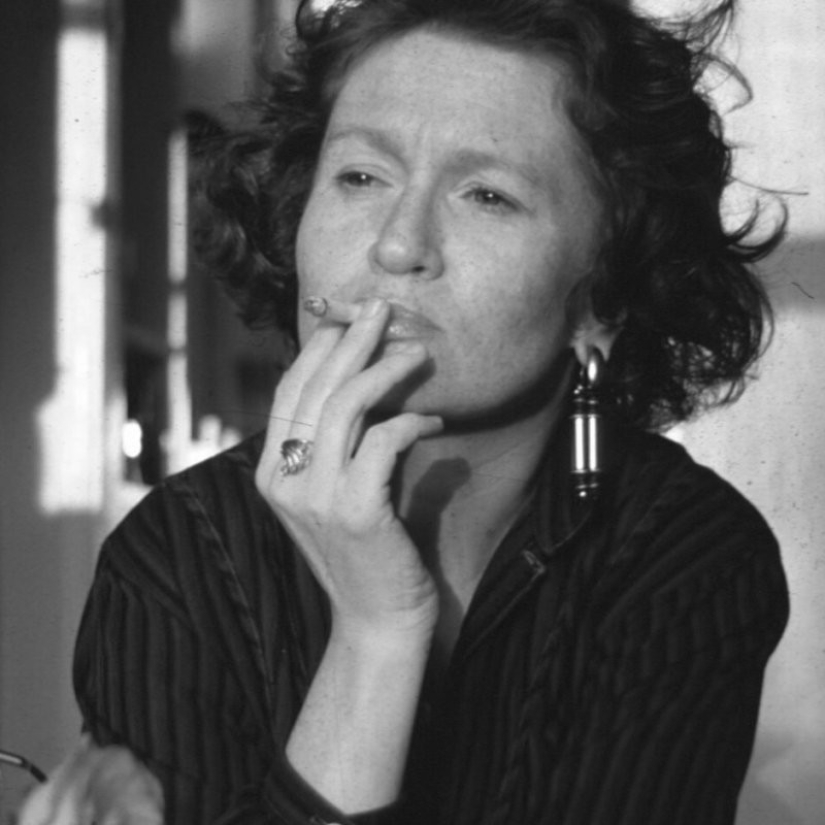
Victoria Ivleva is one of the most prominent Russian photojournalists. Having graduated from the Faculty of Journalism of Moscow State University in 1983, she very quickly gained considerable authority among her colleagues.
At the turn of the 80s and 90s of the last century, she worked in all hot spots, and then in Russia. In 1991, Victoria became the only journalist to film inside the fourth power unit of the Chernobyl nuclear power plant. For this material she received the most prestigious award for a photojournalist - the World Press Photo Golden Eye.
Victoria Ivleva's works have been published by many leading Russian as well as the world's best publications, in particular New York Times Magazine, Stern, Spiegel, Express, Sunday Times, Independent, Die Zeit, Focus, Marie Claire and others.
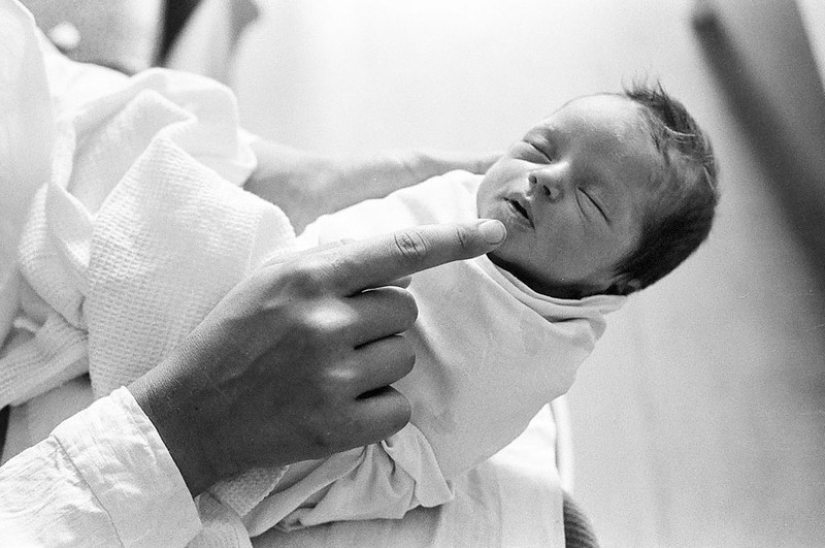
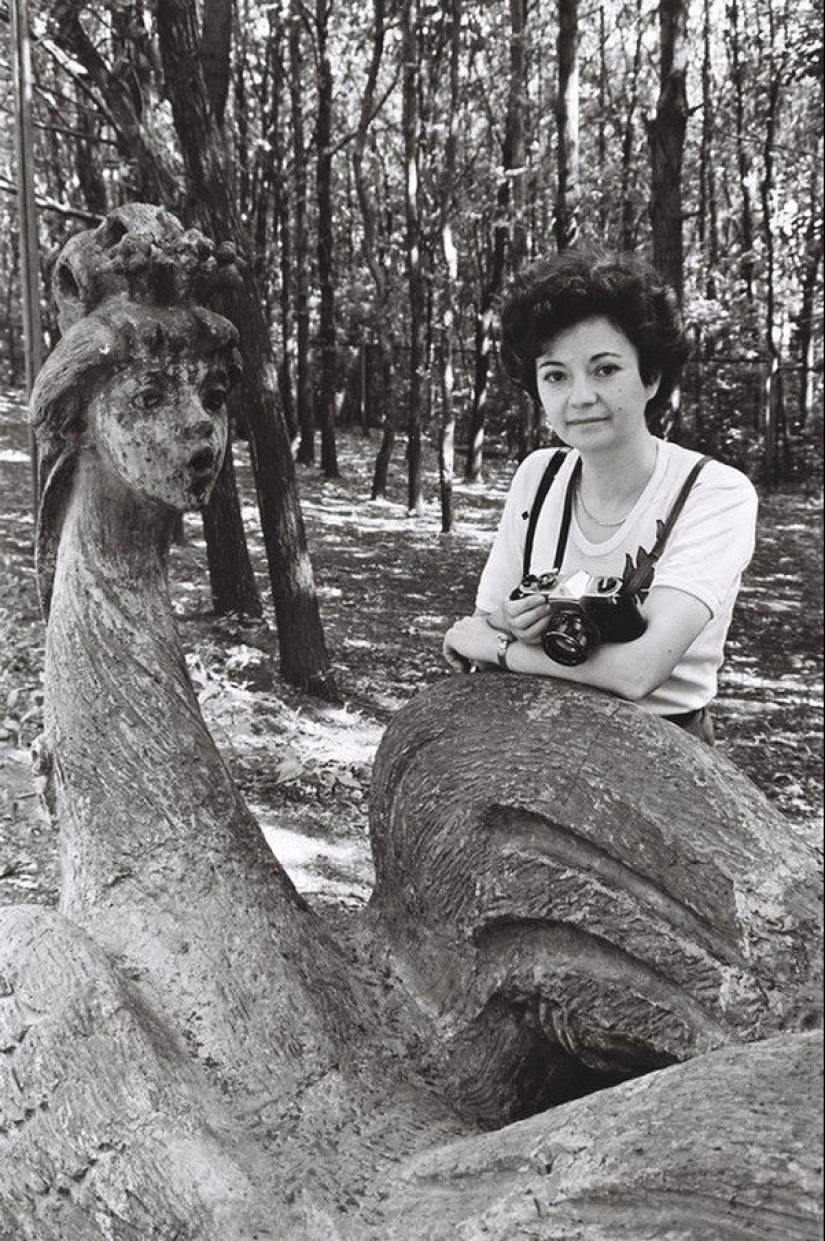
For more than 25 years, Svetlana Georgievna worked as a leading specialist in the photography department of the State Russian House of Folk Art. Currently - Honored Worker of Culture of the Russian Federation, curator of children's and youth photography, jury member, participant and prize-winner of international, all-Union, Russian photo exhibitions, festivals and competitions.
Svetlana is the author of numerous articles and publications on photography, author of the books: “Photobook” (co-authored with A. Agafonov), publishing house “Children’s Literature” (1993), “Photomaster”, Moscow, publishing house “Penta” (2001 g.), “Photographer’s School. Anthology of children's and youth photography", "Gallery of Photomasters", Moscow, publishing house "GALART" (2008) "School of Photographer" (2nd edition), Moscow, publishing house "Indexmarket" (2012).
More than 20 personal exhibitions of Svetlana have been held throughout Russia and abroad. Her works are kept in the State Museum of Fine Arts named after A. S. Pushkin (Pushkin Museum), the State Center for Contemporary Art (NCCA), as well as in private collections. Svetlana taught photography at the Russian State University for the Humanities (Russian State University for the Humanities), and at the Izvestia School of Journalism she taught courses on “Fundamentals of Composition” and “Stylistics of Photography.”

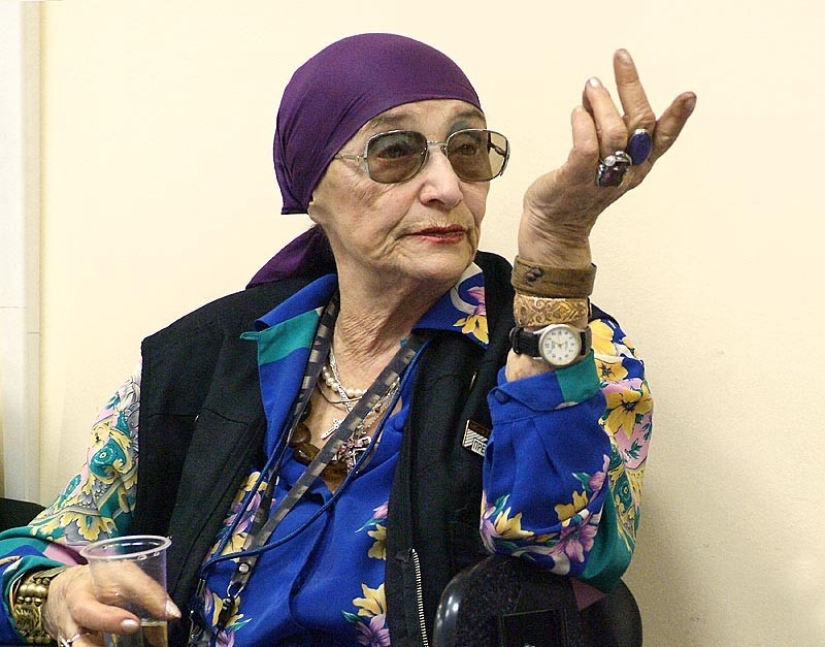
Galina Kmit is a Soviet and Russian photographer, photo artist, photojournalist, Honored Artist of the Russian Federation (2003), member of the Union of Cinematographers and Journalists of Russia, academician, member of the Russian-Italian Ferroni Research Academy, corresponding member of the National Academy of Cinematographic Arts and Sciences.
In the world art of the second half of the 20th century, it is difficult to find a celebrity who would not be captured by the camera of the Honored Artist of Russia Galina Kmit. She knows very well what it's like to walk the red carpet at the Cannes Film Festival.
Exhibitions of photographs by Galina Kmit have been organized dozens of times in Russia and around the world. Galina’s photographic series “These Magnificent Men” and “My Rivals,” dedicated to famous artists, became especially popular.
She is called a living legend of photography. And she herself treats this very reservedly. Here, for example, is what Galina said in an interview with a correspondent of the Teacher’s Newspaper: “Maybe I really am a legend, you never know what happens in the world. Your brother the reporter did his best here. Someone once called me that and off we go. And I don’t mind, it’s not offensive. And who could have imagined that everything would turn out this way. At first I was a writing correspondent, I started in my native editorial office of Moskovsky Komsomolets...”
But Galina Vasilievna’s merits are not limited to just photographs of stars. A true chronicler of photographs, she visited every corner of the Soviet Union. At the exhibition “Russia is my homeland” her beautiful works from Sakhalin, Kamchatka, Komi were presented...

Decisive, strong-willed, talented - Galina’s merits can be listed for a long time.
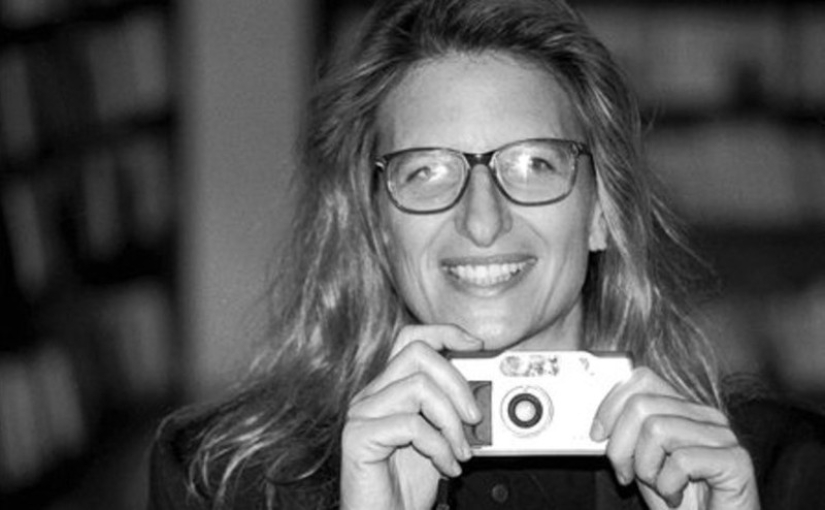
Anna-Lou "Annie" Leibovitz is a famous American photographer, known mainly for her portraits of celebrities. Today she is recognized as the most sought-after female photographer. Annie Leibovitz's fame is so great that it has transformed into a different quality: some of her works simply separated from the personality of the creator and began to live their own life.
Annie Leibovitz was born in 1949 in the USA in the state of Connecticut. Her father was a military man, and the family often moved from place to place. Annie later said that it is not difficult to become an artist if from early childhood you see the world in a ready-made frame, through a car window. The family eventually returned to the United States, and Annie entered the San Francisco Art Institute in 1967, intending to become an art teacher. A year later, she also enrolled in photography courses, where they not only taught theory, but also sent students out into the streets, and in the evening they discussed the photographs taken. In 1969, Annie dropped out of school and went to Israel on an archaeological expedition. Oddly enough, it was there that her desire to become a photographer grew stronger.
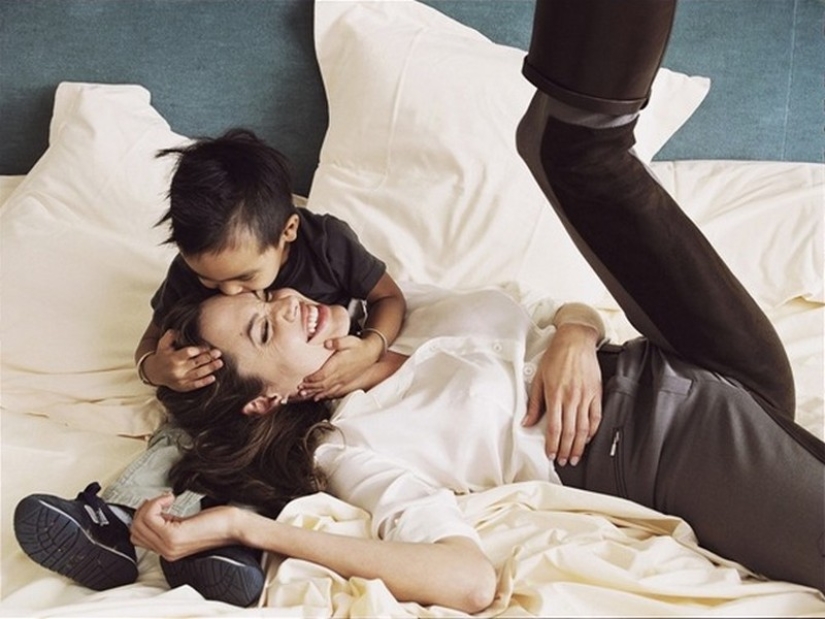
In 1970, Annie was able to meet Rolling Stone founder Jan Wenner and convince him to give her a chance. Since 1971, she became a photographer for this magazine. At that time, Rolling Stone was one of the most popular publications in the United States, and she was able to take photographs of the most famous people. Annie Leibovitz also collaborates with Vogue and simply shoots advertisements for famous brands. But she also has other photographs: for example, from the Bosnian war she brought several poignant shots, including the well-known photograph of a child’s bicycle lying down and blood smeared nearby.
Despite her advanced age, Annie Leibovitz is still active to the envy of many and participates in one project after another, photographing celebrities, organizing exhibitions and publishing albums.
Recent articles

Most of us think that the color of the eggshell does not play any role and it is possible not to pay attention. But it's not and ...

The more we rely on technology, the more potential power hackers gain over us. It doesn't matter if their goal is to help or cause ...

Creating a good portrait is one of the most difficult tasks for any photographer. In order to make a really natural and memorable ...